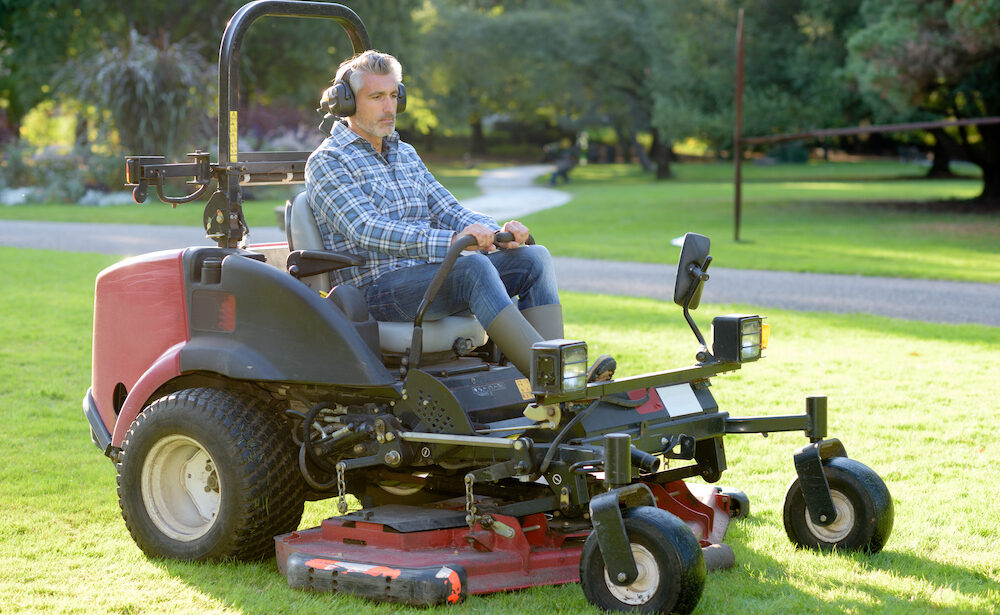
Lawn mowing can be a tedious and tiring chore. What if there were a way to turn that drudgery into something more like fun? Introducing the zero-turn lawnmower. Best used for large properties, zero-turn lawnmowers zip nimbly across lawns like a go-cart. Let’s ride!
What is a zero-turn lawnmower?
Zero-turn lawnmowers have powerful engines that propel the mower and turn twin cutting blades. Zeroes can zoom across landscapes, navigate tight turns, back up, and turn 180 degrees. They have two independently controlled transmissions, one for each back wheel, with two steering and acceleration handles, one for each hand. You move the mower forward or backward by pushing or pulling the handles. Moving them in opposite directions turns the mower on a dime. With a zero-turn, you can mow any landscape with surgical precision, although the size and power of these mowers make them best suited to large lots or acreage.
How to shop for a zero-turn mower
You’ll find zeroes made for residential use and bigger, stronger ones for commercial landscape maintenance companies.
Companies such as John Deere, Cub Cadet, Bad Boy, Husqvarna, Scag and Ariens make residential zero-turn lawnmowers. Evaluate these key features:
- Cutting width ranges from 42 inches to 60 inches. The wider the cut, the shorter the time to mow a property.
- Engine size is important, especially when buying a wider-cutting machine. Look for an engine with two cylinders over 22 horsepower. Kohler or Kawasaki engines are good choices.
- Look for serviceable Hydro-Gear dual transmissions. If problems occur, these products can be repaired instead of replaced.
- The deck covering a zero-turn mower’s blades should be around one-quarter-inch thick. Avoid mowers with one-eighth-inch thick metal decks, as a thin deck can easily be damaged if you hit an obstacle.
- The floor-foot deck and the seat should be hinged to lift up so you access the spindles and belts that turn the blades below the deck. You will regularly clean grass clippings from the deck, so accessibility is important.
- Zero-turn mowers should have a pedal on the right side of the foot deck. You will use this when adjusting cutting height and when you need to momentarily lift the deck while moving as you approach a concrete edge, an uneven place, or even a rock or stump.
- The grass chute cover should be heavy-duty rubber, not cheap plastic.
If you do not have space to store your zero in a garage or shed, consider buying a cover, much like a grill cover, to protect it from the elements.
Prices
As with any large purchase, prices vary depending on size, power and features. Generally, prices for residential zero-turn mowers start around $3,300 and can hit $8,000.
Related – Green and Efficient: Exploring the World of Electric Lawn Care


